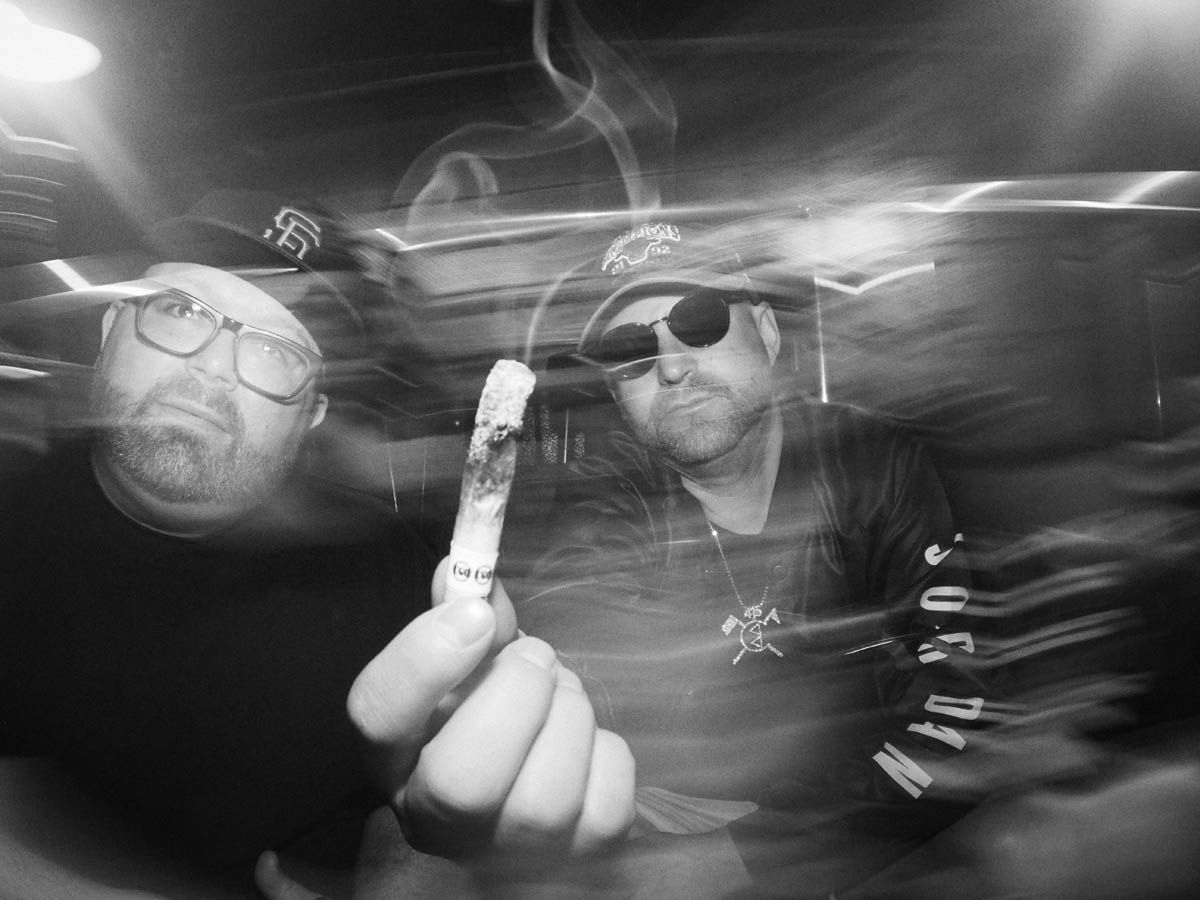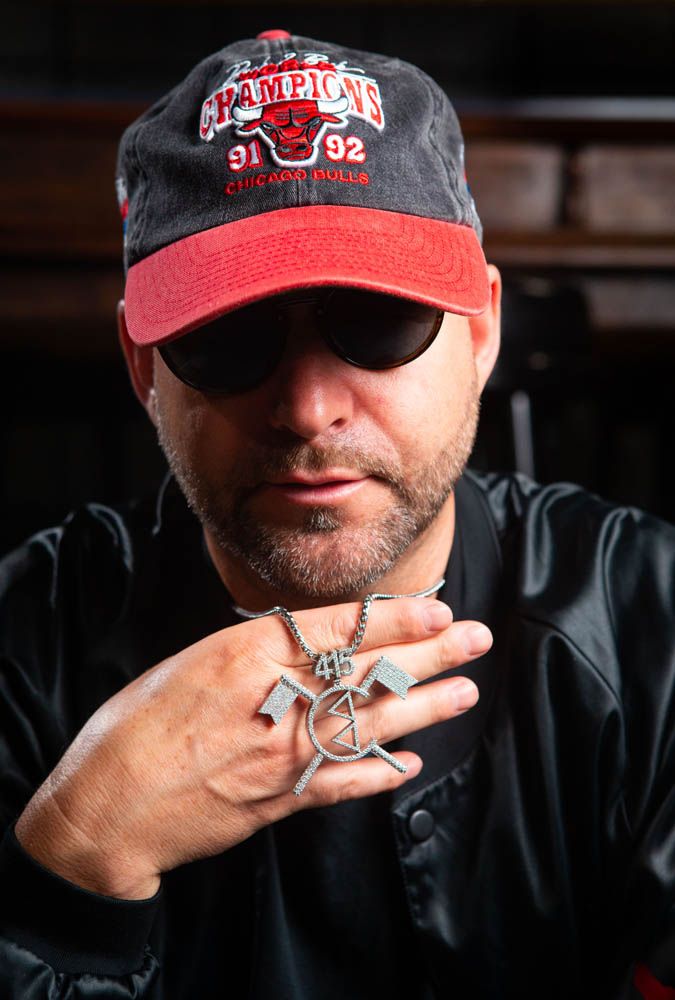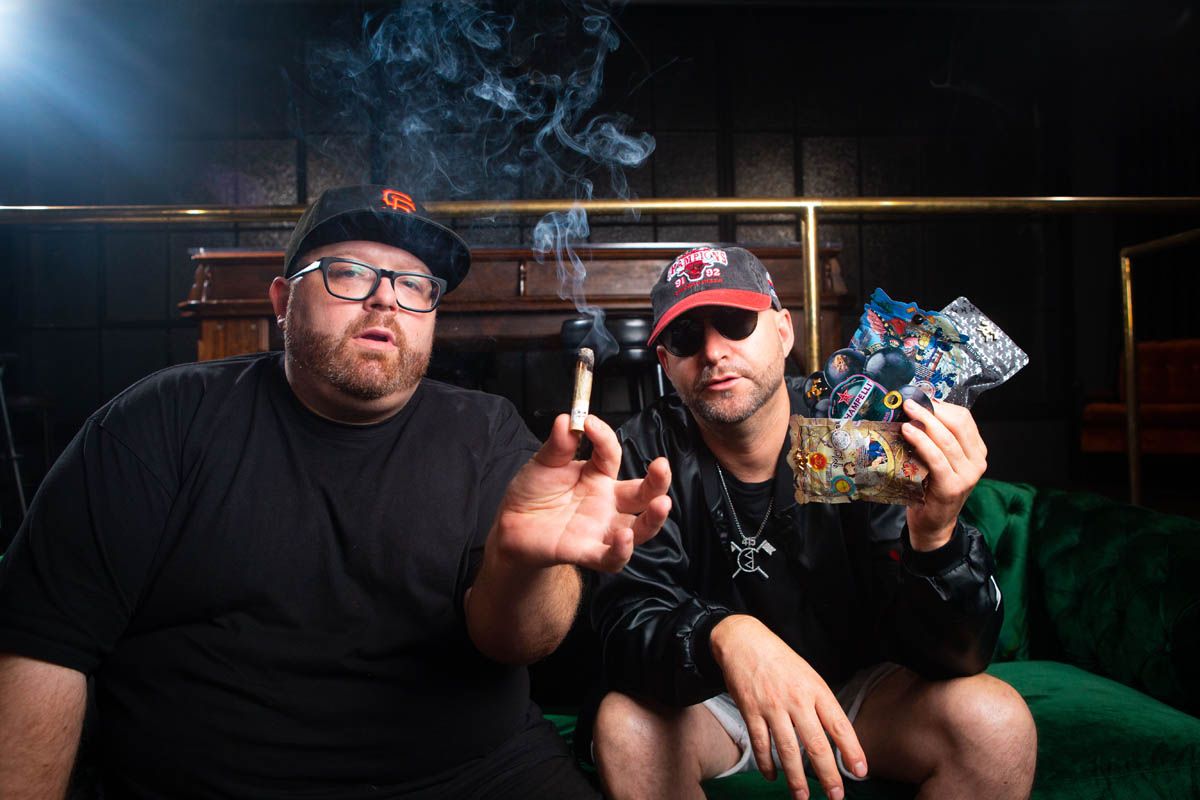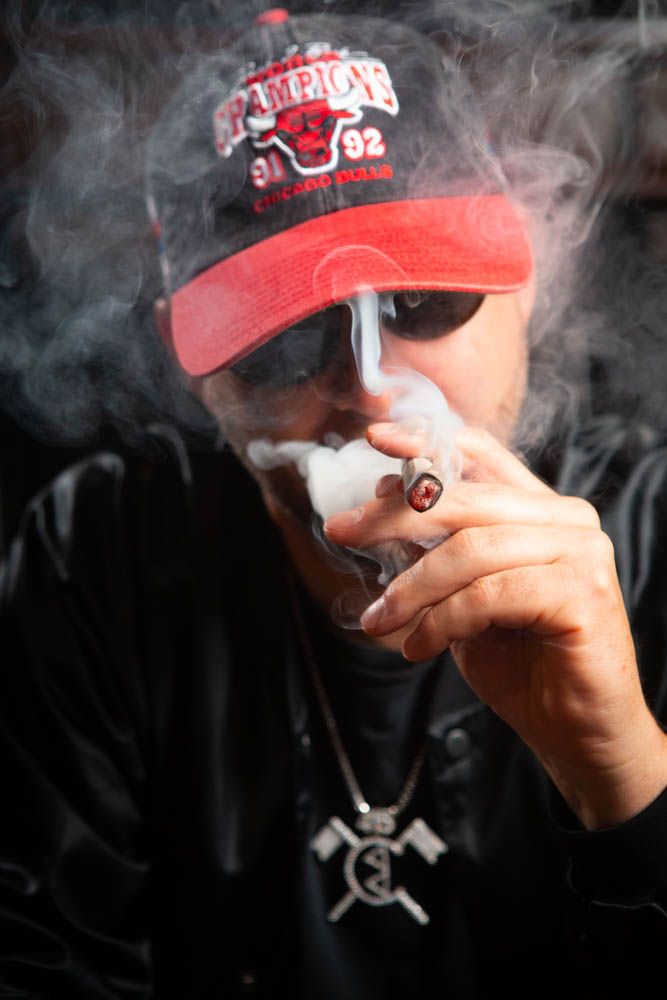If you really want to learn about cannabis, you have to grow. I’ll die on that hill. Cannabis growers - AKA cultivators - are incredible. Being a grower means you’re pretty much MacGyver. That’s what it means for someone like Champelli, who’s done it all in his 37-odd years in the cannabis culture.
“I’ve been immersed in so many different facets of the plant from day one,” Champelli says.

Who Is Champelli?
There's not too many people who can flout his experience of the early days in the cannabis mecca of San Francisco, where it all began. The legendary cultivator, whose name and eponymous strain have been immortalized in hip hop over the past several decades, is such a giant precisely because he has done and can do it all. Cultivators may in fact be the most important part of the supply chain - without growers, where would all the cannabis come from? He believes everyone who touches the culture has had a hand in shaping its destiny and community from the earliest pioneers to the newest gold rush of people coming into the industry.
Because of years of prohibition, growers have become some of the hardest people to find in the cannabis supply chain. But back in the 90s (before Berner and Sherbinski), “Champelli” was the name on everyone’s tongue. The name was heard from your local plug to the legendary Snoop Dogg, and the Champelli strain was referenced in rap tracks by artists such as Mac Dre, Memphis Bleek, The Jacka, Beanie Sigel and so many others. As it turns out, Champelli got into music production from a young age and went on to start his own record label, Champelli Ent., in the mid 90s; he was running with the West Coast’s best hip hop artists and creatives starting in his teens, developing beats for Mac Dre, San Quinn, Gonzoe and Bad Azz among others. Over the years, he’s added production on songs for Wiz Khalifa, Gucci Mane, Young Dolph, Berner, Styles P and B-Real of Cypress Hill to his resumé.

Champelli's First Cannabis Experiences
How could a producer of an (at the time) illicit product be known coast to coast? To get the answers, we spoke to the man himself. Honeysuckle met with Champelli (born Joseph Rutherford) at his latest brand headquarters in San Francisco, California. Champelli was born in Spain but raised in the Bay Area when his mother moved back to the U.S. The youngest of five brothers, he grew up in San Francisco’s Tenderloin neighborhood. San Francisco would soon be considered a plant haven for the young Champelli; however, his first memories of cannabis go back to Amsterdam in the late 1970s and early 80s, where one of his older brothers, Steven, who passed away from cancer in 2010, then owned a coffee shop.
“I remember seeing bricks of hash in my brother’s closet, the smell of Lebanese blonde hash with the red AK47 stamp, the opium-infused Chitrali, the Moroccan kief and the sound of Bob Marley,” Champelli says. “I didn’t really know the legality of it at the time, I was like 7-8 back then…I didn’t put two and two together. The sounds, the smells, and the bricks of Lebanese blonde hash stuck with me.”
Recalling his early years of living in Bernal Heights in San Francisco after he and his mother moved out of the Tenderloin, Champelli notes:
“I remember my brother growing [cannabis] in our mom’s kitchen pantry. It was basically lit with skylights, that’s where the plants, the dishes, the cat, and the litterbox were. This is when I was in elementary school, and that was the time I first tried smoking.”
He scraped up whatever dried leaves he could find at home left over from his brothers grow and tried to roll it up with his homies in elementary school, eventually proceeding to smoke anything he could find out of the spice rack. He then started his journey growing in the very same pantry where his brother had cultivated, working with seeds from cannabis that he bought, even though his mother was “totally opposed to it and raising hell about me trying to grow.”

How Did Champelli Start Cultivating Cannabis?
Now this is where it starts to get spicy. By the time he went to high school in the late 1980s, Champelli had been introduced to a friend of his brother’s, “an old school smuggler type hippie from Mendocino. My brother Steven, RIP, took me up to his farm in the mid-80s and I got to see a working cannabis farm, which was highly illegal at this time. Later on my brother's friend gave me cultivation tips, particularly that cutting down light would encourage bud development.” This was where the young grower started pioneering light deprivation.
“I started bringing the plants from the kitchen pantry down into the basement at 6pm and depriving them of light and then bringing them back up,” Champelli describes. “That's called light dep now, which is a super common practice. Back then, hardly anybody in cannabis was thinking about light dep at all.” Definitely the pioneering days for sure!
Light deprivation is the process of triggering the plant’s flowering cycle by cutting its light (or sun) exposure down. This allows cultivators to really dial in their plants and effectively manage them. An extremely common practice today, it’s wild to think this man was working with these then-experimental techniques on a highly illicit plant in the late 1980s when everything about cannabis was highly illegal and underground guerilla style.
“It started with just smoking and buying to smoke for myself and my buddies,” Champelli explains. “And then it turns into, well, how can I sustain this? Weed is expensive so you pool together with some friends to buy an eighth or a 10 sack, everybody pitches in. At that point…you put two and two together. You buy from somebody you know, share it with a friend and charge 'em an extra five bucks and save yourself five bucks.”
And those, my friends, are the exact same reasons why I started hustling in college and the reasons why my buddies started growing. It’s literally a story as old as time - start flipping to support your habit. Except Champelli’s people were different; they were buying at $400 an ounce, in 1988, of the weed he was personally growing and naming! He quickly realized he could make real money doing this. That, combined with love of the plant and teenage energy fueled his journey to become the man we know him as today.

Champelli's Top Strains, Brand, And Becoming A Hip Hop Legend
He dropped out of high school as a junior and got an apartment on his own when battling with his mother about cannabis and hustling out of the house came to a head. Taking the only place that would rent to him, a broken-down unit on 69 Woodward Street amid multiple crack houses, Champelli started his first proper indoor grow in 1991. One of the top strains he had was called Ant Juice:
“I named it the Ant Juice because it had all these little ants getting caught in the crystals of the weed. And the taste was super unique. Nothing like today. A lot of strains were lost through time. Back then people didn't quite have the foresight to keep genetics around and keep 'em going, it was so underground and illegal, no one thought stuff would disappear so quickly. So a lot of stuff was lost. But these particular genetics were just amazing…So I was already branding and naming stuff back then.”
Of Champelli’s “branded” strains - “branded” in quotes because he branded both the cannabis and himself - his most legendary would be the Champagne strain. It evolved a few times to eventually settle on Champelli, a strain that found its way into the hands of extreme sports athletes, rappers, and other artists from coast to coast. Partially through his involvement with the music and art scenes, Champelli achieved an explosive underground success in the mid-to-late 90s. Among his “holy shit moments” of hanging with hip hop royalty, he remembers flying to the House of Blues in New Orleans for rapper Juvenile’s birthday in 1999 and hanging with him in the Magnolia Projects, plus numerous parties with B.G., Turk and the then-teenage Lil Wayne. Or there was the time when he got to hear The Blueprint album in Miami on Star Island before its release which JAY-Z played for him personally!
He recalls, "Throughout the late 90s the whole Roc-A-Fella crew always showed me mad love and I have nothing but respect for them, some of the realest in the game to date.”
There was also the memory of smoking Champelli at P. Diddy’s Christmas party and rubbing elbows with some of the largest hip hop artists and moguls of the time.
“New York in the 90s was different,” Champelli recalls. “I remember being in a club another time, dancing next to Diddy with girls smoking ‘The Pelli’ listening to ‘I Got 5 On It’ from Luniz, everyone tripping out because no one was smoking giant joints in the clubs in New York at that time."
It’s suddenly clear why Champelli succeeded. He wasn’t just part of the culture; he was the culture. But that came to an abrupt halt in 2001.

Champelli's Absence, Return and Doing Time For Cannabis
“I got a tip from a lawyer friend who basically recommended that I should leave the country, due to me being adjacent to some other people’s legal issues that I kind of got caught up in,” the icon explains.
Despite the fact that he’d just finished building a music studio and “had my record label in full swing with a lot of planned project releases and was doing my thing at the time,” the cultivator decided to leave the U.S. “It was kind of an interesting human zen experience… a lesson on being able to let go of literally everything: family, material possessions, etc.”
He spent almost ten years out of the country, and during that time his iconic strain disappeared with him. Often imitated, never duplicated, Champelli was still immortalized in cannabis culture and urban myth and lore. The man himself returned just before the federal statute of limitations came into effect for his warrant. Arrested soon after his arrival back to the States, Champelli was then charged for conspiracy to distribute marijuana and served six months in prison.
“[Six months] isn't a ton of time considering people do, or are doing, time and years for cannabis still,” he reflects. “But serving any time for a plant that nature gave us with so many positive benefits seems unjust. So it is an issue that's close to my heart and I try to be active where I'm able to as far as bringing light to the injustices in cannabis reform and legalization in general.”

What's Next For Champelli?
Cannabis Strains and Terpenes
So what’s next for Champelli? He’s taken a backseat for now on direct cultivation, though he’s focused on his brand and pheno-hunting. His new mission: Taking popular strains of today’s market and crossing them with old school seed stock, pushing them to bring back flavors that were lost with time.
When asked about the original Champelli strain, he admits, “Yeah, I actually still have seeds of the original Champagne…I've just been holding out waiting for the right situation to crack 'em. A lot of it is just my own trust issues with where I decide to crack it. It's a lot to maintain genetics and I don't currently have my own nursery that I really have full control of. I have a couple partner nurseries that I work with, but for something like that, I'd really like to own my own space to crack those and vet 'em out.”
His focus is not on high THC, but the perfect terpene profile: “Terpenes are a major thing to me. They play a huge role in the medicine and how you experience cannabis. The energy and the insight, everything that it gives you is through the terpenes. The fact that high THC is being pushed by the industry so heavily is misguided and misinformed. You can smoke a strain of 35 percent THC and not get high at all, whereas a strain with 17 percent will get you super high.”
Champelli treats cannabis just like his art and music. He often equates different plant traits to various visuals or sounds he likes, and he intends to remix modern strains with his classic strains to add to the genetic diversity and create new flavors we haven’t experienced yet.

Champelli's New Music
The artist has also continued to go strong with music production and visual creation. Among his current projects, he’s working with several reggae artists including Kalihi, with whom he just released the singles “Moonshine” and “Whine In Champelli Tree Mix.” As a record label, he has “at least 150 unreleased songs” that he did with Bay Area artists in the late 90s, not including his previous album releases from that period, which he’s steadily trickling to an eager public.
Champelli is dialing in the brand’s supply chain and partnering with different license-holding entities. Though the innovator notes his company is marketing, branding and genetics-focused for the moment, he says the ultimate goal is to pursue cultivation licenses and strategic partnerships to eventually become vertical. It will only serve to grow the legend of Champelli as he and his team gear up to develop more and release some existing remarkable strains.

Champelli's Lifestyle Brand And Fashion Designs
His Champelli lifestyle brand now offers clothing as well, which has always been part of the brand ethos even from it’s early days. “I’ve always been passionate about fashion, design and creating. Every medium is an opportunity for me to express myself, whether it's designing a new cut and sew piece for the clothing line, or creating a new strain cross and bag design. I truly enjoy the process of creating and I apply all my skills from producing music to painting and even cooking; it's all just making art to me in different forms.”
“In the creation of my cut and sew pieces I've been trying to find ways to reduce the brands footprint and move away from the fast fashion model; for example, in my retrograde line of jackets I used almost all upcycled materials from my manufacturers warehouse. They used to do the original cut and sew for The North Face before they became what they are today. So the retrograde jackets are literally old North Face nylon material from the 80s. Even down to the zippers, excluding the embroidery and the labels, which were new production. Trying to find a way as a brand to do our part as it aligns with my own beliefs of reducing, reusing and recycling wherever possible. Cannabis also has a large ecological footprint, from its power usage to petroleum-based nutrients and petroleum-based packaging. Moving forward as an industry, I think it's our job to accept accountability and take steps towards reducing our impact on the environment. We're using a piece of plastic that will be here for thousands of years for a quick transaction that is later discarded a few minutes later after consumption. I believe it starts with awareness and education and brands should be on the forefront of finding solutions wherever possible.”
Champelli pieces are designed to encapsulate the uniqueness of the music-skateboarding-graffiti-art influences that made the icon himself what he is. If you want some new threads, check out his website at champelli.co.

What Does Champelli Think Is Most Important In The Cannabis Industry?
Sharing some wisdom on what’s truly important for the cannabis industry from a justice and culturally honorable viewpoint, Champelli adds, “A lot of the prisoners who are still locked up are the people who paved the way for this whole culture and this billion dollar industry to exist! A lot of those stories, lessons and messages are getting lost in the hustle and bustle of consumption and the material side of the cannabis industry now. We need to make sure these stories are maintained and heard. We should be using [cannabis] to balance our lives and respect the Earth and Mother Nature. That's what I believe its real purpose is [and] even mushrooms have that same message if you really tune in. There's so many people that had a hand early on that were inspirations to me. Whether it was early jazz musicians who were huge proponents in promoting the herb and the medicine through their music, or going back to Indigenous people and their ceremonies. The connection to this plant dates back thousands and thousands of years.”
In this ever evolving industry, Champelli has maintained cultural relevance and continues to push the envelope while paying homage to those before him.
To keep up with all things Champelli, check out his website champelli.co and his social media channels @Champelli and @Champelli.co.
A version of this article was originally published in Honeysuckle's milestone 15th print edition. Click here to get your copy now!
Find Out More On Social
--
Featured image: Champelli (C) Sam C. Long / Honeysuckle Media, Inc. @tissuekulture



